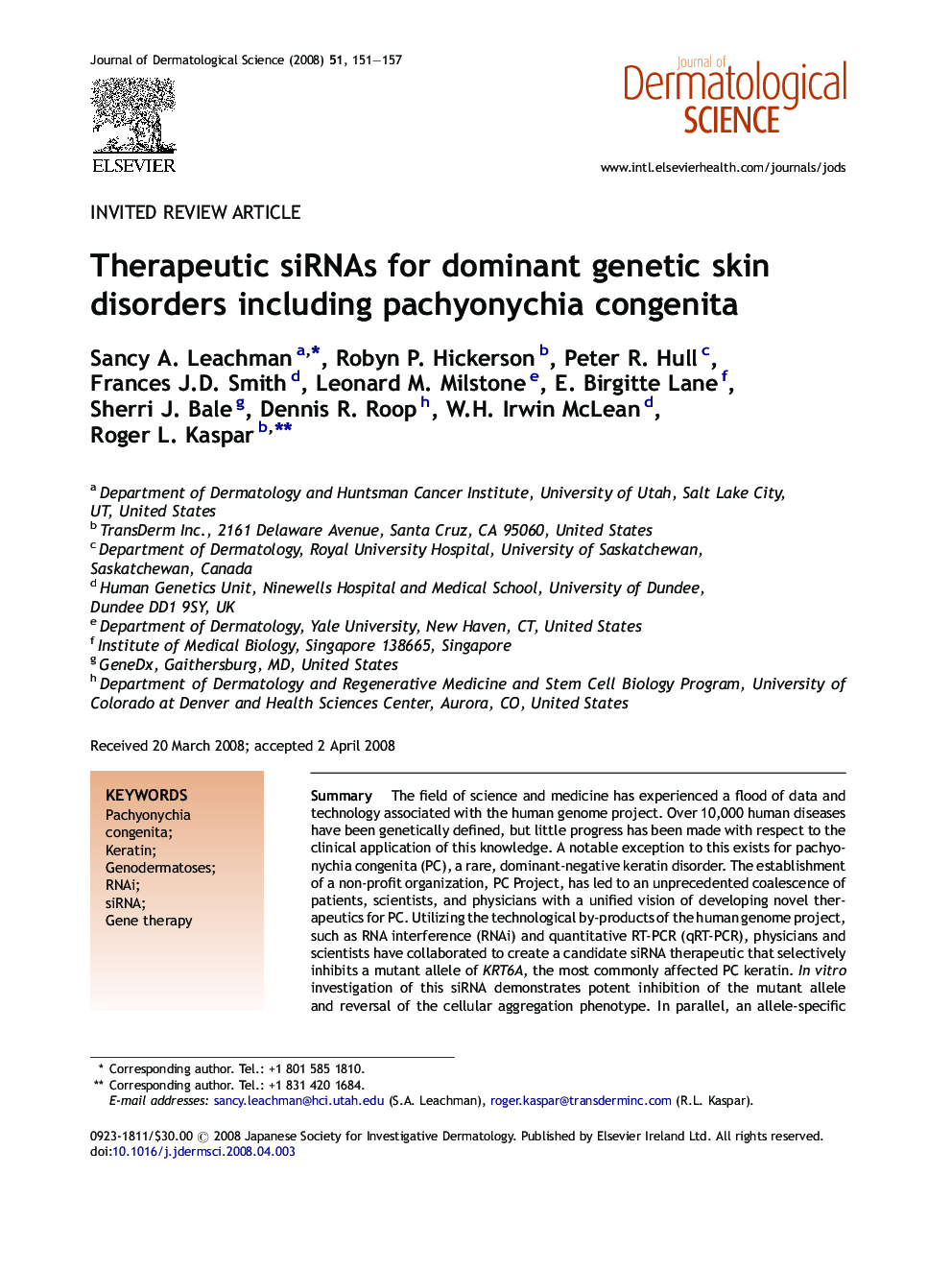| Article ID | Journal | Published Year | Pages | File Type |
|---|---|---|---|---|
| 3213955 | Journal of Dermatological Science | 2008 | 7 Pages |
SummaryThe field of science and medicine has experienced a flood of data and technology associated with the human genome project. Over 10,000 human diseases have been genetically defined, but little progress has been made with respect to the clinical application of this knowledge. A notable exception to this exists for pachyonychia congenita (PC), a rare, dominant-negative keratin disorder. The establishment of a non-profit organization, PC Project, has led to an unprecedented coalescence of patients, scientists, and physicians with a unified vision of developing novel therapeutics for PC. Utilizing the technological by-products of the human genome project, such as RNA interference (RNAi) and quantitative RT-PCR (qRT-PCR), physicians and scientists have collaborated to create a candidate siRNA therapeutic that selectively inhibits a mutant allele of KRT6A, the most commonly affected PC keratin. In vitro investigation of this siRNA demonstrates potent inhibition of the mutant allele and reversal of the cellular aggregation phenotype. In parallel, an allele-specific quantitative real-time RT-PCR assay has been developed and validated on patient callus samples in preparation for clinical trials. If clinical efficacy is ultimately demonstrated, this “first-in-skin” siRNA may herald a paradigm shift in the treatment of dominant-negative genetic disorders.
